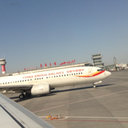Ischemic injury underlies the pathogenesis of aristolochic acid-induced acute kidney injury.
キーワード
概要
Aristolochic acid nephropathy (AAN) is a progressive tubulointerstitial renal disease caused by aristolochic acid intake. To determine the contribution of renal ischemia to the pathogenesis of AAN, we characterized changes in the expression of angiogenic factors and vasoactive substances, and then we evaluated the expression of a marker of hypoxia in an acute AAN rat model. Rats were orally administrated either a decoction of Aristolochiae manshuriensis that contained 20 mg/kg of aristolochic acid-I or an equal volume of distilled water (control group) once daily for 4 days or 7 days. Renal histology and serum creatinine were assessed. Expression of endothelin-1 (ET-1) and hypoxia inducible factor-1 alpha (HIF-1alpha) mRNA within renal cortex were determined by semiquantitative reverse-transcription polymerase chain reaction. Levels of ET-1, nitric oxide (NO), vascular endothelial growth factor (VEGF), and HIF-1alpha in kidneys were determined by radioimmunoassay, Griess method, Western blot, and immunohistochemistry, respectively. Tubular injury scores and ET-1 mRNA expression were increased in the AA-treated rats at both days 4 and 8, whereas serum creatinine level and ET-1 protein expression was increased only at day 4. In contrast, NO production in AA-treated rats was decreased at day 8 compared with the control group. Similarly, VEGF protein expression was reduced in the AA-treated rats at both days 4 and 8. A dramatic increase in nuclear staining for HIF-1alpha was observed mainly in the tubular cells of tubulointerstitial damage area in the AA-treated rats at day 8. The observed increase in HIF-1alpha protein expression, decrease in VEGF protein expression, and imbalance of vasoactive substances after induction of acute kidney injury by AA suggests that ischemic injury contributes to the pathogenesis of AAN.


